Today we’ll continue our series about the Spanish Theme Park History with the fourth article. Every two weeks we’re publishing one of eight articles about the history of thirteen Spanish amusement and theme parks. Some of them no longer exist, but some others are still operating and receiving guests nowadays. In this series, we travel in time through 168 years in theme park history, starting in 1853, to our days in 2021. In this article we’ll focus on Parque de Atracciones de Madrid, a park with lots of history, an interesting variety of rides and attractions, that is constantly evolving to offer the best experiences to its guests.
– In the past, many of our images have been posted, featured, and shared on forums, social media platforms and websites around the web. We work hard to provide the coverage that we do, and we encourage our audience to share our content and use our images, BUT ONLY IF proper credit is given to thecoasterkings.com. Thank you! –
Parque de Atracciones de Madrid (Madrid, 1969)
In 1959 a government plan for the stabilization and improvement of the Spanish economy was approved. Measures such as the reduction of labor costs were implemented to create more incentives for foreign investment. Transportation, banking, mail, security, and health services were improved, among others. During the 60s period known as “The Spanish Miracle” people started to have money and time to enjoy their free time, and the hospitality and tourism industry developed accordingly.
In 1964, in order to expand and improve Madrid and the surrounding metropolis, the Madrid city council announced an ambitious management and development plan for Casa de Campo. Casa De Campo is the largest public park in Spain (1,535.52 hectares), and one of the largest urban parks in the world outside the United States. Among other facilities, the construction of an amusement park was announced, with the condition that no trees would be removed for it’s construction.
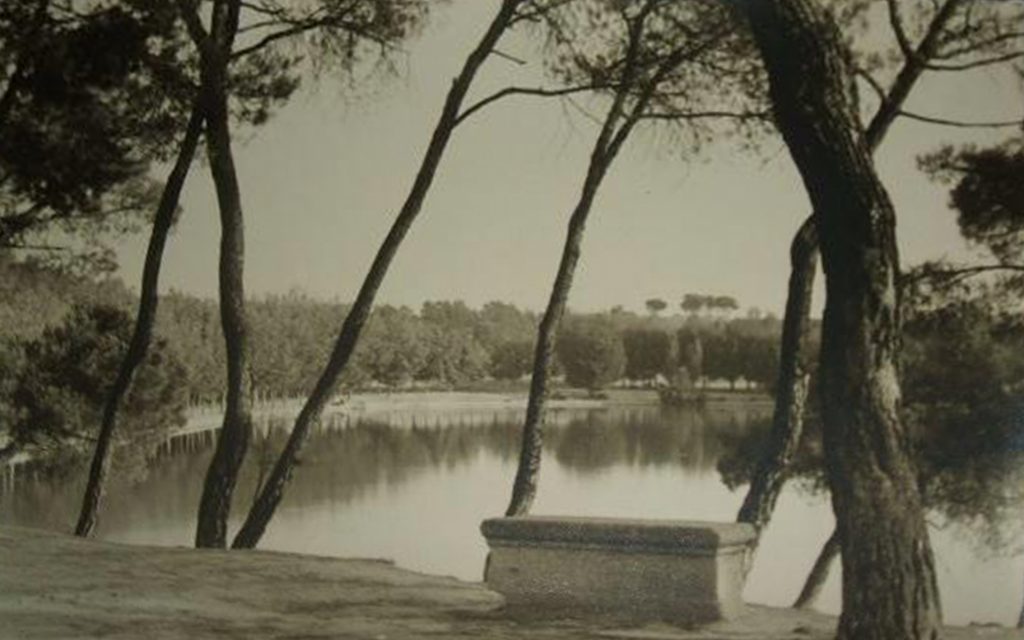
Source: https://www.todocoleccion.net/fotografia-antigua-gelatinobromuro/madrid-lago-casa-campo-fotografia-por-gonzalo-ramirez-anos-50-12-x-18-cmts~x128865047
The proposal to build an amusement park was reported in the Spanish press as “Una Disneylandia a la española”/“A Spanish Disneyland”. The first plans for the project were very ambitious and consisted of a theme park rather than an amusement park, with areas dedicated to Don Quijote, an ancient Arabian city (including a magic carpet flying over the rooftops), a Roman city, a medieval area and, finally, a futuristic city overlooked by a huge geodesic dome made of aluminum and steel (predating EPCOT by 15 years!).
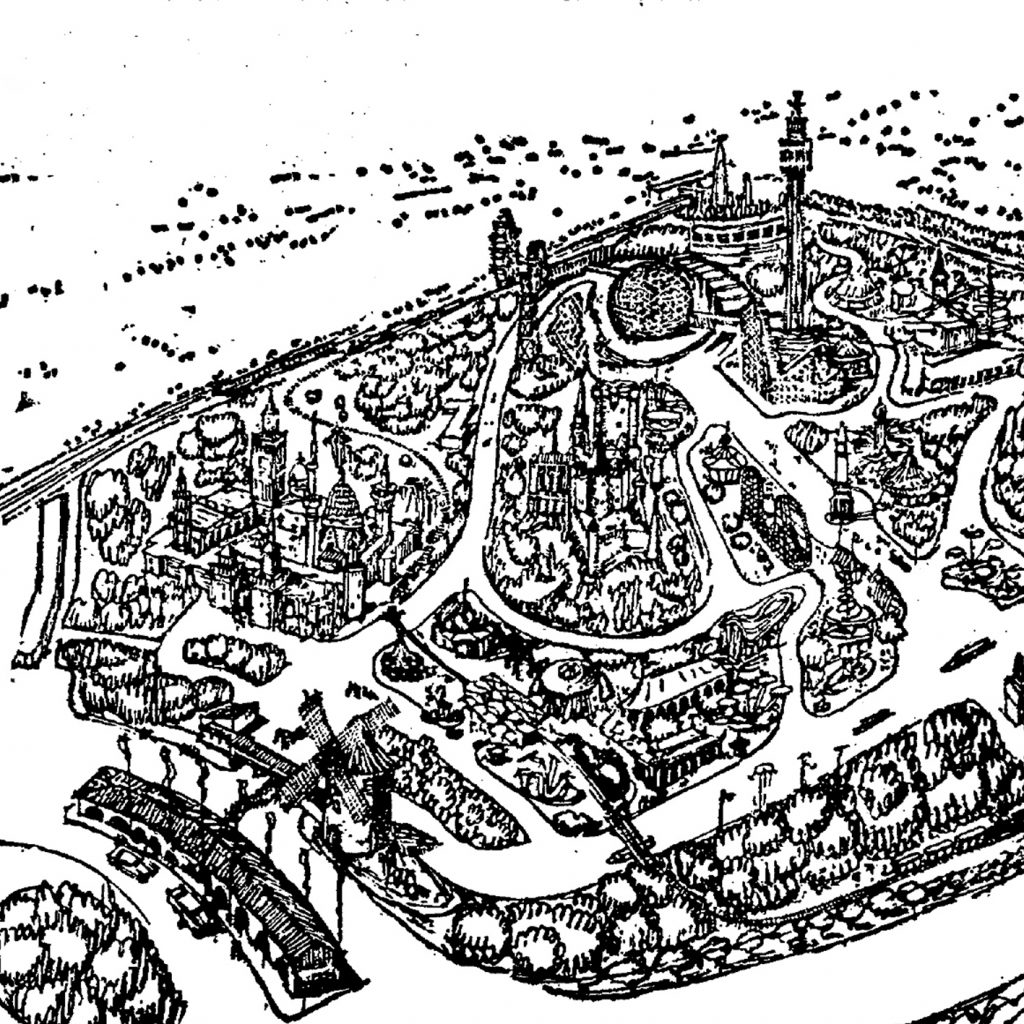
Authors: Fernando Chueca Goitia and Rodolfo Lama
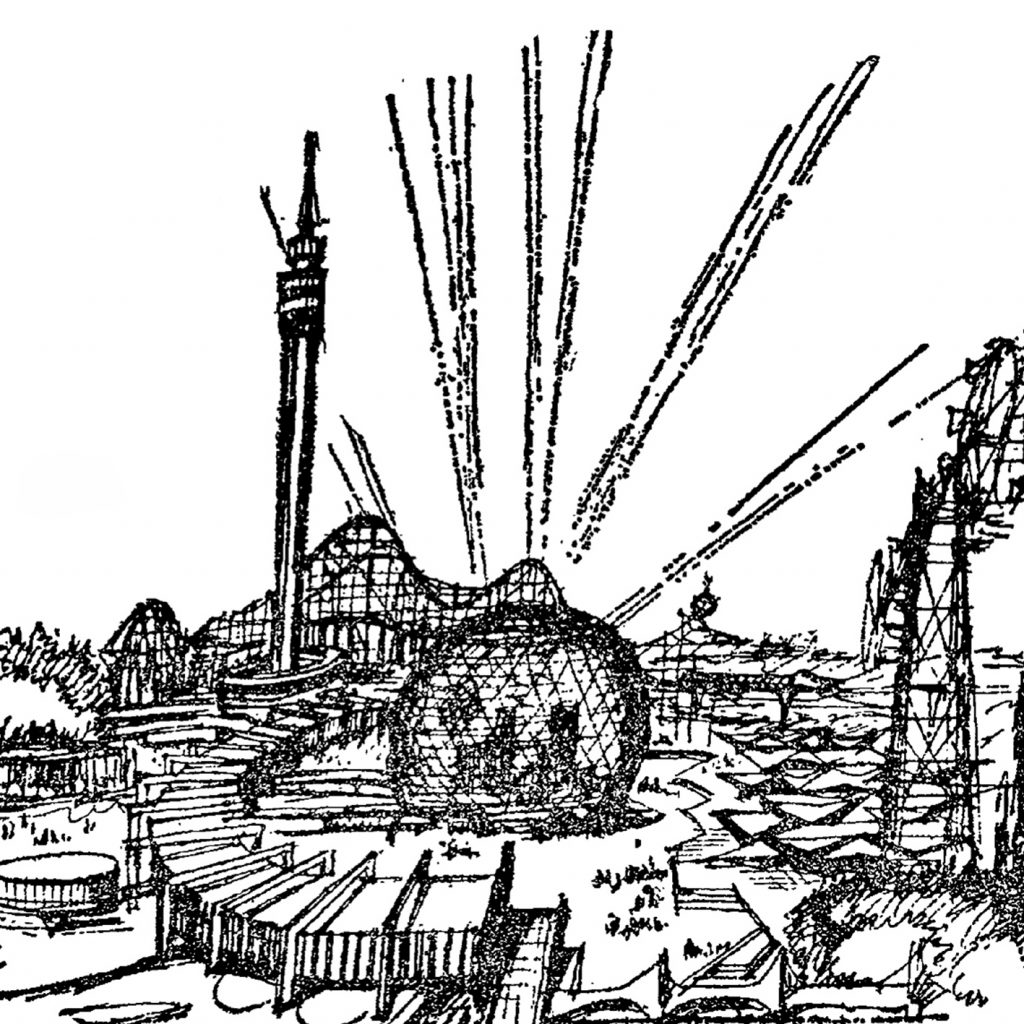
Authors: Fernando Chueca Goitia and Rodolfo Lama
The budget for the project was enormously high. Finally, a more realistic plan was presented, which consisted of three construction phases. This new and more realistic plan was approved by the city council. Before starting the construction of the amusement park, a large artificial lake was built for practicing water sports and fishing, as well as other types of sports facilities, such as soccer fields. The road accesses to Casa de Campo were also improved and a subway station was built.
The planned date for the park’s inauguration was May 1968 but, due to various logistical and administrative problems, construction had not yet begun in April 1968. Due to this problem, a new agreement was reached with the city council to postpone the opening date for one year, until May 1969. In August 1968, the construction of the park began. The construction was carried out at a good pace, but the month before the inauguration the working hours had to be extended to 24 hours (divided into various shifts), and the number of workers had to be increased in order to finish the park on time.

Source: Besas, M., & García, H. (2016). Parque de Atracciones de Madrid: Un viaje desde sus orígenes hasta el presente. Ediciones La Librería
Just 10 days before the park’s inauguration, the entire ground was inundated due to severe torrential rains. The opening date of the park had to be postponed once again, luckily this time it was only a matter of a few days.

Source: Besas, M., & García, H. (2016). Parque de Atracciones de Madrid: Un viaje desde sus orígenes hasta el presente. Ediciones La Librería
Finally, Parque de Atracciones de Madrid (Amusement Park of Madrid) was inaugurated on May 15, 1969, after 9 long months of construction. The park immediately received a great reception, in fact, on inauguration day more than twice the expected number of people went to the park.
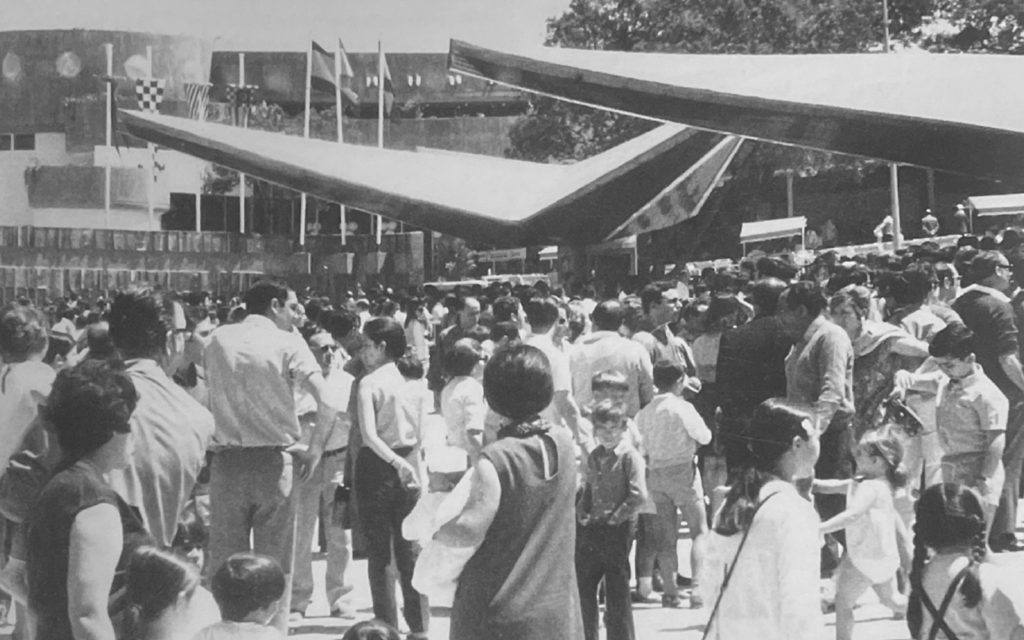
Source: https://elpais.com/elpais/2019/05/07/album/1557243229_462271.html#foto_gal_2
On opening day, the park’s icon was a huge flying saucer, called “Platillo Volante”. This flying saucer was located on top of a 33 meters high and 4 meters in diameter large column, which emerged from an artificial lake. Carlos Buigas, a great and internationally recognized water and light shows specialist, was the designer of “Platillo Volante”. He also designed the fountains that were located under the saucer where a nighttime spectacular, like “World of Color” in Disney California Adventure, was held every night. The show was old-school and manually operated. Inside “Platillo Volante” there was a bar and a viewpoint. The accesses to the saucer were by an elevator located inside the central column or by external stairs.
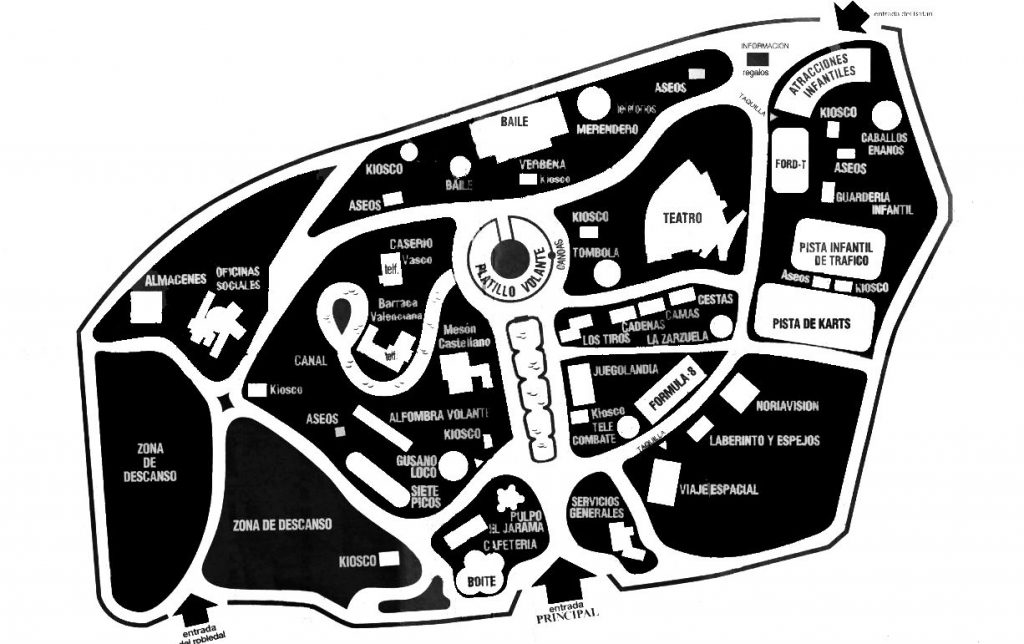
Source: https://www.madridproyecta.es/parque-de-atracciones/
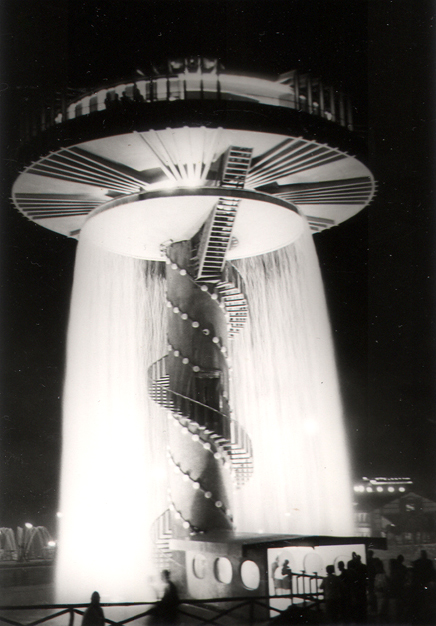
Source: http://www.agenteprovocador.es/publicaciones/cenar-en-un-platillo-volante-o-cuando-madrid-tuvo-un-ovni
Parque de Atracciones de Madrid has always had a certain attachment to space and science fiction themes. Next, we will see two remarkable attractions that were based on space and science fiction. “Telecombate” (1969-2000) was a spinner attraction that consisted of small flying saucers attached to a central structure. The flying saucers of “Telecombate” could also rotate on themselves.
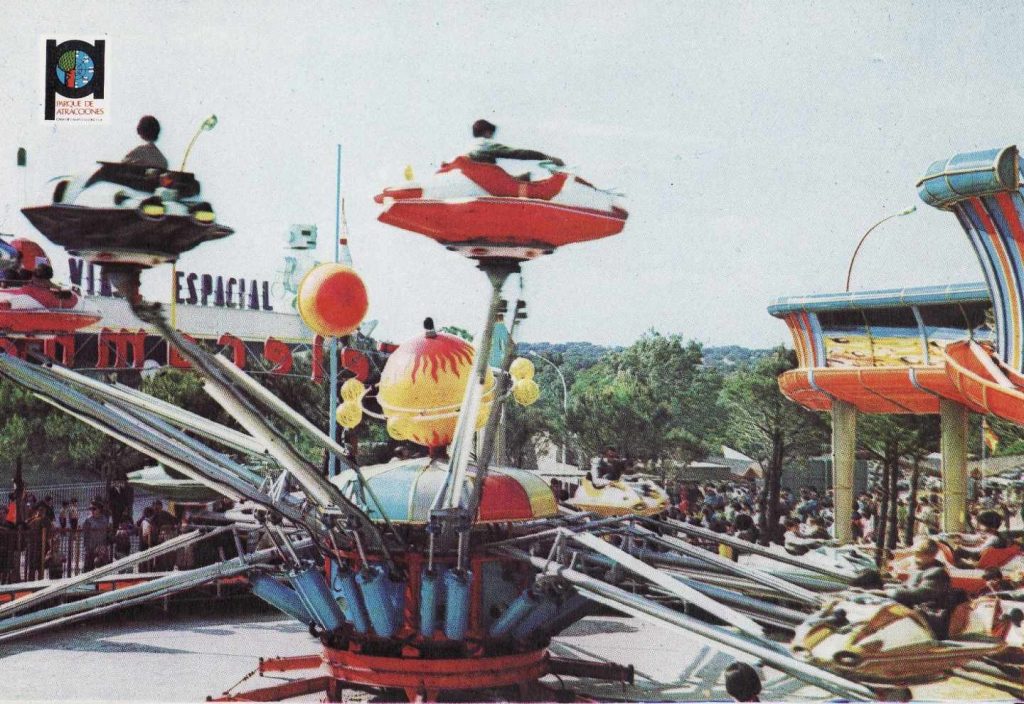
Source: https://www.elindependiente.com/tendencias/2019/05/14/diversion-leyendas-tragedias-50-anos-parque-atracciones/
Following the same theme, another interesting attraction that opened at the end of 1969 was “Viaje Espacial”/“Space Voyage” (1969-1998), which name would later change to “Viaje Galáctico”/“Galactic Voyage”. This attraction was a dark ride, with blacklight illuminated scenes about space exploration, basing its theming on space rockets, robots, antennas, planets, and astronauts, among other elements. When the attraction was renamed “Viaje Galáctico” in 1986, part of the theming was modified. Its exterior facade was decorated according to the science fiction movies of the time.

Source: https://www.madridproyecta.es/parque-de-atracciones/
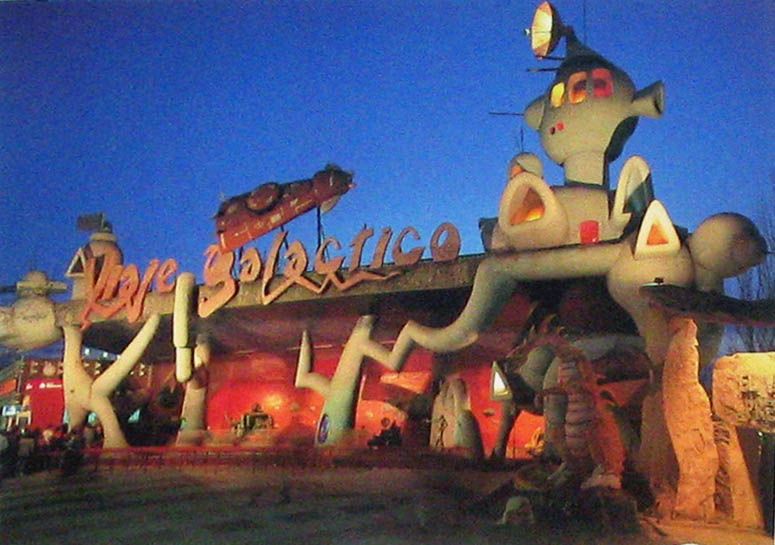
Source: https://www.pinterest.es/pin/419608890257146614/
Another icon of Parque de Atracciones de Madrid was “Teatro Auditórium”, a large open-air theater with a capacity for more than 3,000 people. Because of the performances of many famous Spanish artists, and because it was not required to buy a separate ticket to enter the shows, “Teatro Auditórium” was one of the best incentives to visit the park.
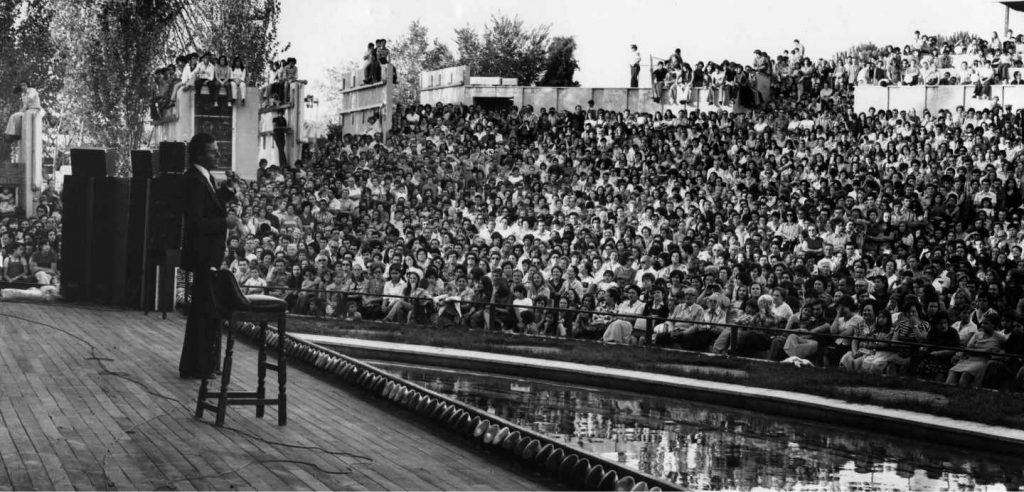
Source: https://www.elindependiente.com/tendencias/2019/05/14/diversion-leyendas-tragedias-50-anos-parque-atracciones/
At its inauguration, the park also had a roller coaster: “7 Picos”/“7 Peaks” (1969-2005). “7 Picos” was a sit-down steel roller coaster, with a length of 460 meters and a height of 13.5 meters that reached speeds up to 60km/h. The “7 Picos” name was given to the ride as a reference to a mountain range located between the region of Madrid and the province of Segovia. However, despite the name, the attraction did not have 7 peaks. An interesting fact about this roller coaster is that the braking of the cars was done manually by an operator.
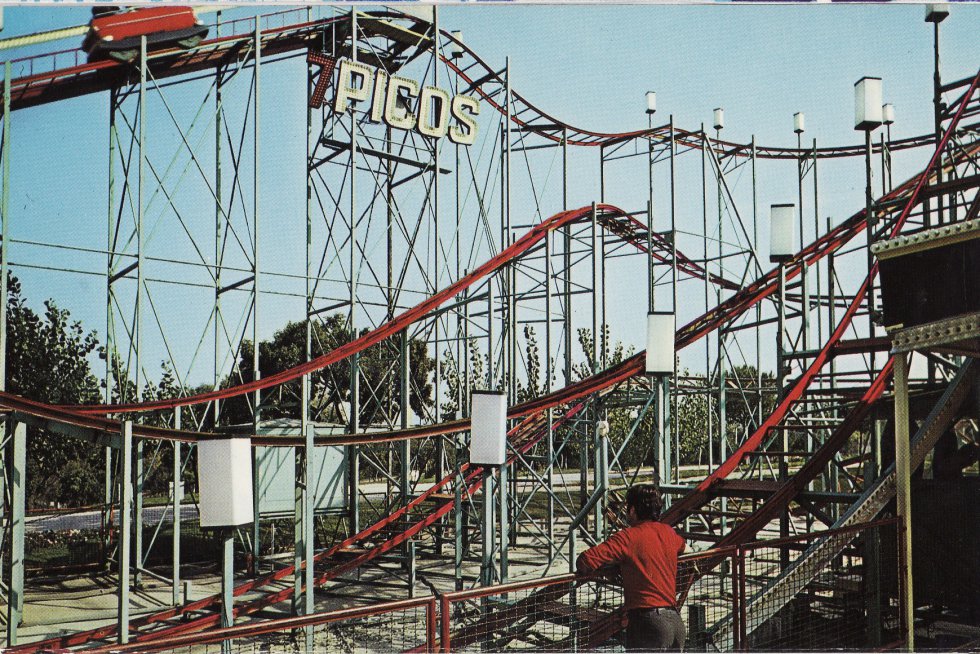
Source: https://elpais.com/elpais/2019/05/07/album/1557243229_462271.html#foto_gal_2
Some of the other attractions that were part of the park on opening day were a large slide called “Alfombra Mágica”/“Magic Carpet” (1969-1999), a lake where guests could navigate by canoe, an extensive picnic area, a mirror maze, carnival games, a bumper cars track, an electric car track, a go-kart circuit, and also a carousel of great value, as it was entirely made by hand in France in 1927. It should be noted that there were several smaller versions of the most popular attractions for children.
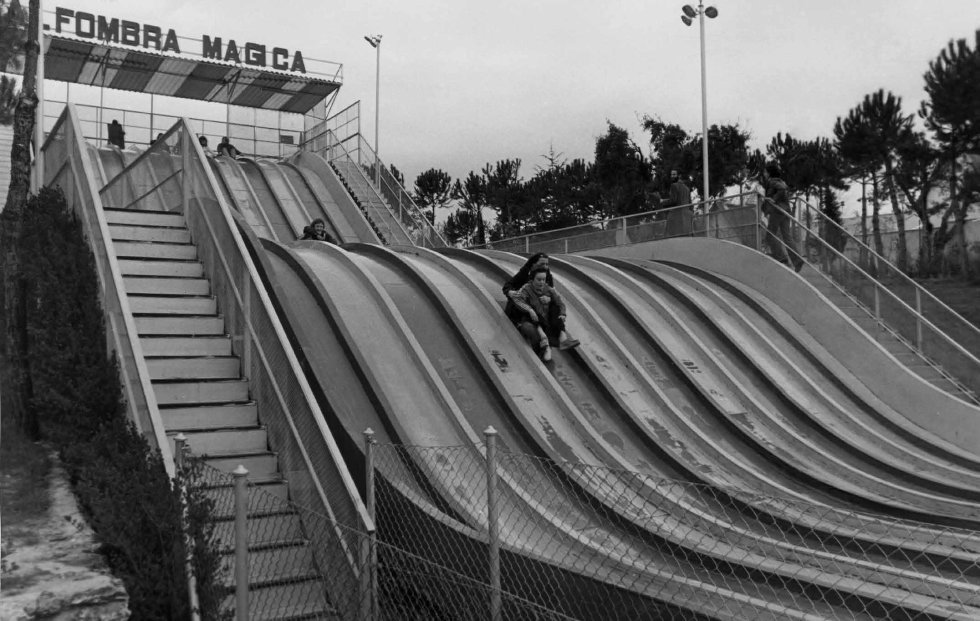
Source: https://elpais.com/elpais/2019/05/07/album/1557243229_462271.html#foto_gal_5
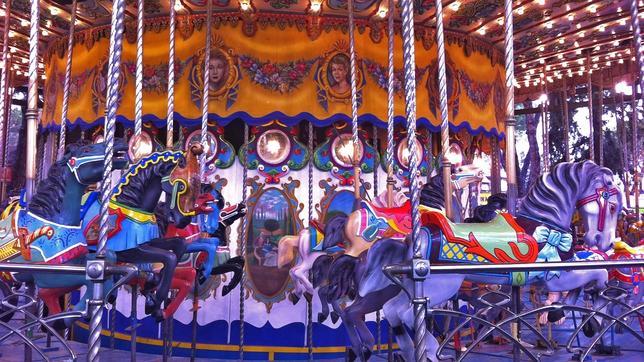
Source: https://www.abc.es/espana/madrid/abci-tiovivo-201203280000_noticia.html
Since the park’s inauguration, various gastronomic experiences have been offered to guests. On opening day, the most outstanding restaurants were: “Mesón Castellano”/“Castillan Tavern” (1969-2010), which specialized in the typical gastronomy of the Castilla-La Mancha Spanish region. “Caserío Vasco”/“Basque Hamlet” (1969-1988), which offered typical gastronomy of the Basque Country region. Later on, this restaurant was converted into the park’s horror maze. “Barraca Valenciana”/“Valencian Hut” (1969-1993), where guests could mainly taste paellas, a typical dish from the Valencian Community, another region of Spain. and “Cafetería/Boîte Sagitario” (1969-1973), where aperitif-style meals were served during the day and, at night, became a dance and party room that would not close until 3 AM. All the restaurants described were decorated and themed according to the gastronomy they offered and the region of Spain they represented. In addition, from the beginning, the park has held different events and cultural, gastronomic, and thematic festivals.
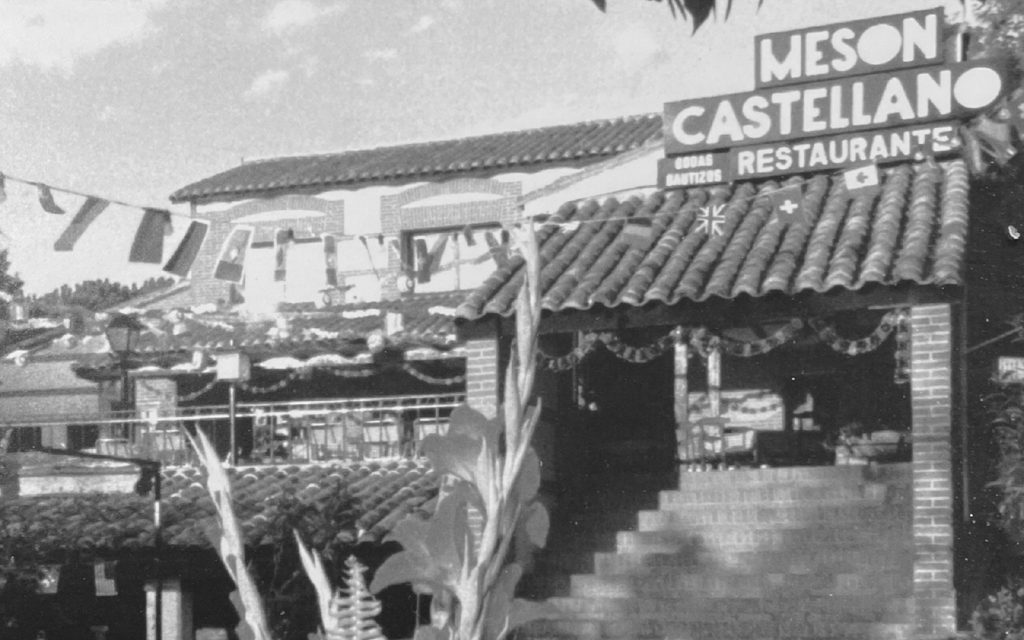
Source: Besas, M., & García, H. (2016). Parque de Atracciones de Madrid: Un viaje desde sus orígenes hasta el presente. Ediciones La Librería
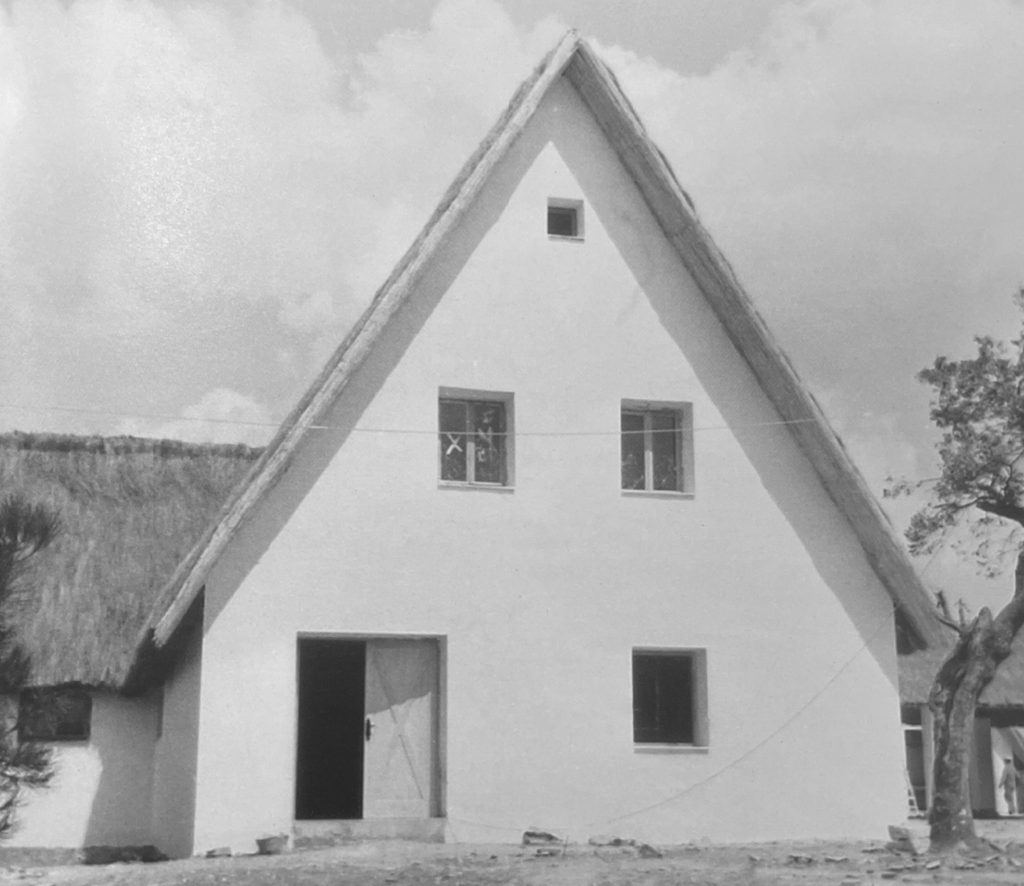
Source: Besas, M., & García, H. (2016). Parque de Atracciones de Madrid: Un viaje desde sus orígenes hasta el presente. Ediciones La Librería
After the first year of operations, Parque de Atracciones de Madrid closed for a month, in which maintenance tasks and the assembly of new facilities and rides were carried out. One of the new rides was a roller coaster called “Jet Star” (1970-1998), which was the second roller coaster in the park and offered a very high-speed sensation, as well as significant lateral G-forces.
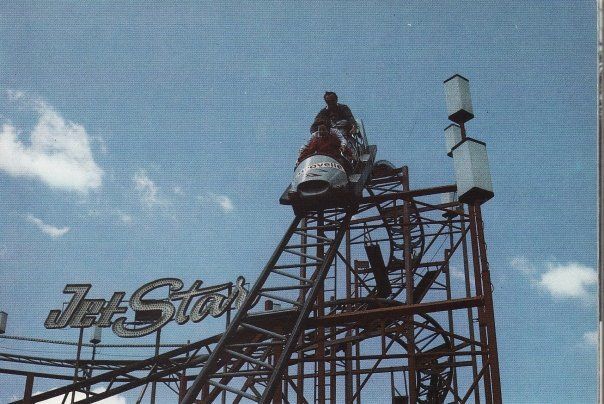
Source: https://spaincoaster.com/jet-star-parque-atracciones-madrid/
Another notable attraction that opened during the park’s second year of operations was “Viaje al Centro de la Tierra”/“Journey to the Center of the Earth” (1970-1979), a walk-through experience inspired by Jules Verne’s novel with the same name, where visitors could visit the depths of our planet. The outer façade of this attraction consisted of a smoking volcano (doesn’t it resemble a bit of Tokyo DisneySea?). In this experience, visitors descended into the center of the Earth through an elevator that used a more primitive version of the fake-elevator technology that today we can find in attractions such as “Harry Potter and the Escape from Gringotts” or “Star Wars: Rise of the Resistance”.
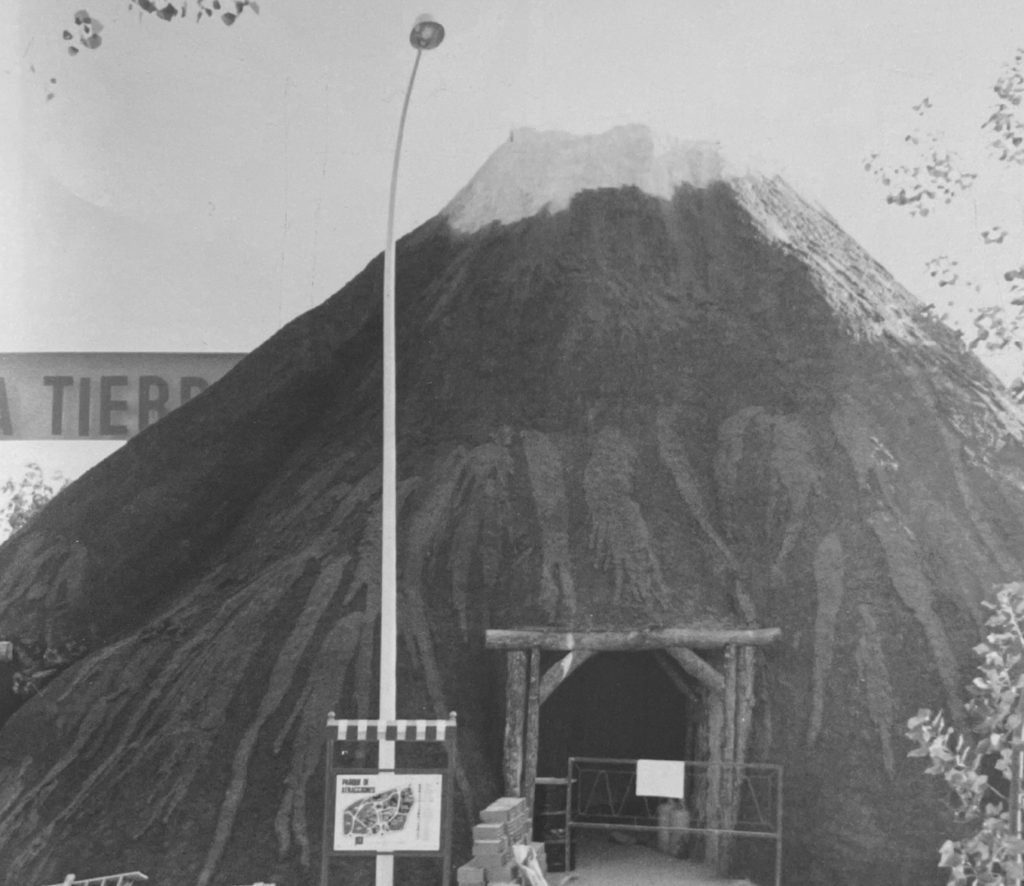
Source: Besas, M., & García, H. (2016). Parque de Atracciones de Madrid: Un viaje desde sus orígenes hasta el presente. Ediciones La Librería
Once guests reached the depths of our planet, they could visit three grottoes: the mineral grotto, the phosphorus grotto, and the fire grotto. There, they could walk through a suspended bridge over a lava lake (simulated, of course, although it seems that the effect was quite achieved). Finally, another elevator carried the intrepid guests a few meters up, back to the surface. This attraction was designed by Carlos Buigas, who had also designed “Platillo Volante” (the park’s icon) and the different fountains where light, music and water shows were held. Unfortunately, the attraction was almost entirely destroyed by a fire in 1979.
Another attraction that was inaugurated in 1970 was “Noriavisión” (1970-2011), a 30-meter-high Ferris wheel that, at that time, was the tallest in Spain. From the Ferris wheel, guests could enjoy wonderful views of the Casa de Campo park and Madrid’s skyline. A curiosity of this Ferris wheel is that the gondolas could rotate on themselves using a very similar system to the one found in the classic teacups attractions.

Source:https://cadenaser.com/ser/2019/07/26/album/1564153155_924292.html#1564153155_924292_1564154857
“Ferrocarril del Oeste”/“Western Railway” (1970-1998) was another important attraction of the second phase of the park. It was a miniature train, themed like the old west American trains. For this attraction, old locomotives that had been built for the Ibero-American Exposition in Seville in 1929 were bought and completely restored.
In 1970 “Casa Magnética”/“Magnetic House” (1970-1995) was also built. It was a house with a 30º inclined floor, where guests could experience disorientation, imbalance, and a gravity force alteration, that made it seem like one of the house’s walls was a huge magnet. Later, in 1972, “Circo Mecánico”/“Mechanical Circus” (1972-1976) was inaugurated. It consisted of a show where an animatronic orchestra of stuffed animals played music. Once the show closed some of the animatronics were sold and transferred to a private collection in Barcelona.
In 1978, a new attraction was inaugurated that will surely sound familiar to our readers: “La Jungla”/“The Jungle” (1978-Present). This ride consists of a thematic tour where guests travel on a boat through a canal surrounded by vegetation, decoration and animatronic figures of animals, explorers, and indigenous tribes. Some interesting scenes of the ride are a temple in ruins, a sunken ship looted by monkeys, and a scene where guests encounter two explorers climbing a tree and a rhinoceros beneath them.
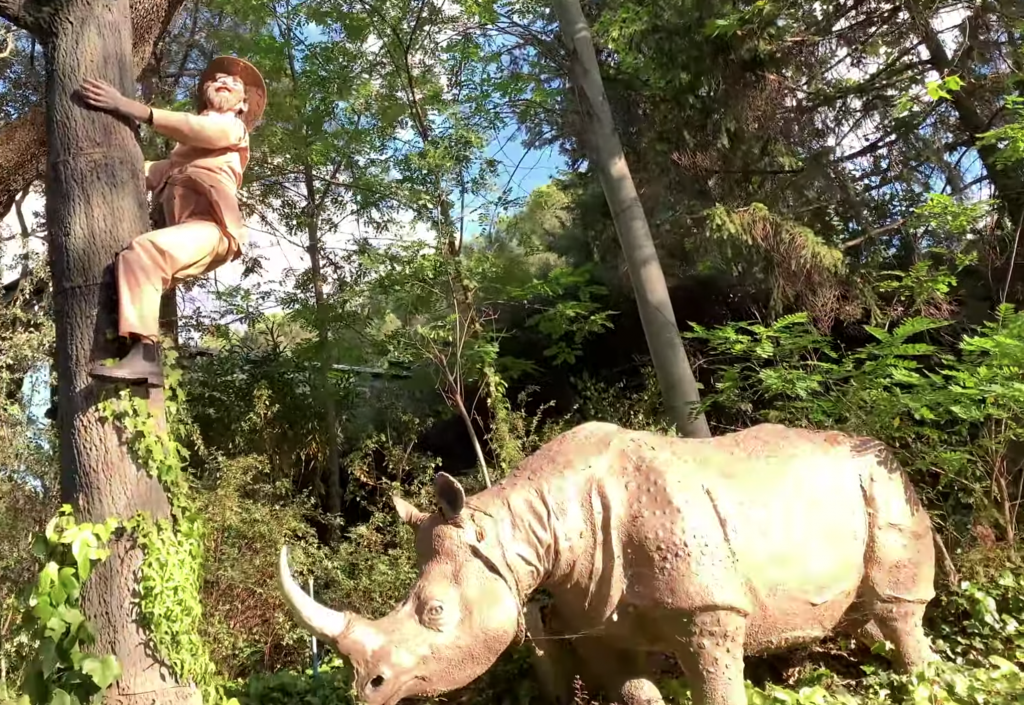
Source: https://www.youtube.com/watch?v=j6xOP7Ekxo8&ab_channel=DREAMCOASTER
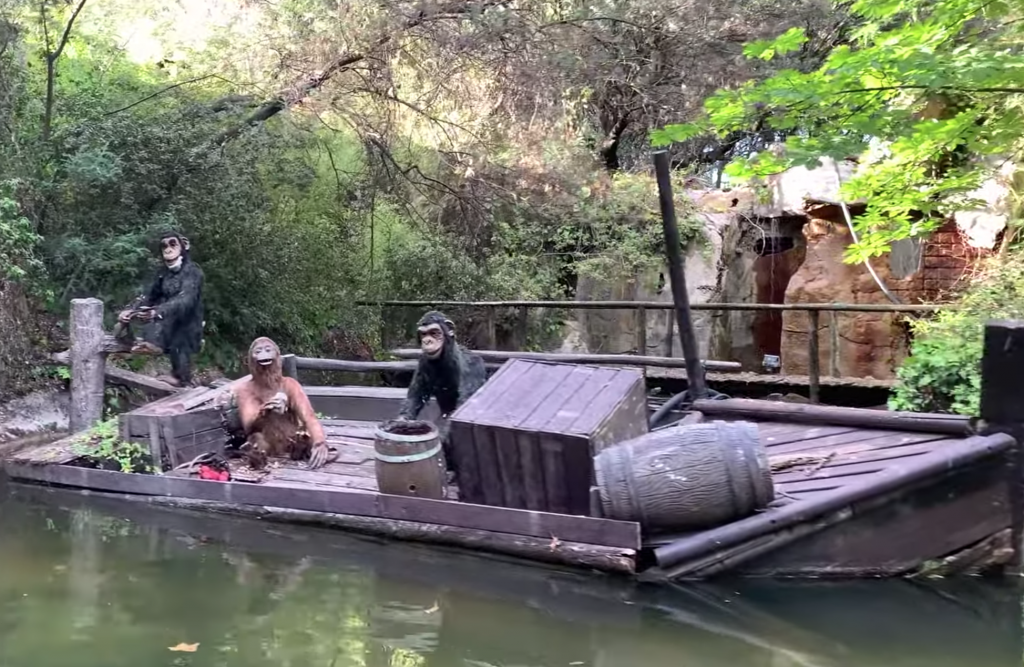
Source: https://www.youtube.com/watch?v=j6xOP7Ekxo8&ab_channel=DREAMCOASTER
In 1980 “Cinema 180” (1980-1996) was inaugurated, which later on was renamed “Cinema 2000”. It was a giant dome-shaped structure where short films were screened at 180º. At that time, it was a very new experience for the Spanish public. As a curiosity, the film used to start with On-Ride footage of Revolution (or The New Revolution) roller coaster at Six Flags Magic Mountain, the first in the world with a 360º loop.
Two years later a new attraction with a prehistoric theme opened its doors: “Valle de la Prehistoria”/”Valley of Prehistory” (1984-1996). It was a similar ride to “La Jungla” but with scenes that recreated different prehistoric periods, including cave paintings, a fight scene between a tyrannosaurus rex and a triceratops (both animatronics), and a volcano recreation.
Another attraction that will surely sound familiar to our readers is “Los Piratas”/“The Pirates” (1984-1996), which was built in the same location where 15 years earlier “Viaje al Centro de la Tierra” was located. It was a dark ride inspired by the Disney Parks’ popular pirate-themed attraction. However, in this case, the ride system was more similar to the one used in “Peter Pan’s Flight”, since guests rode rum barrels that were hung from a rail located on the roof.
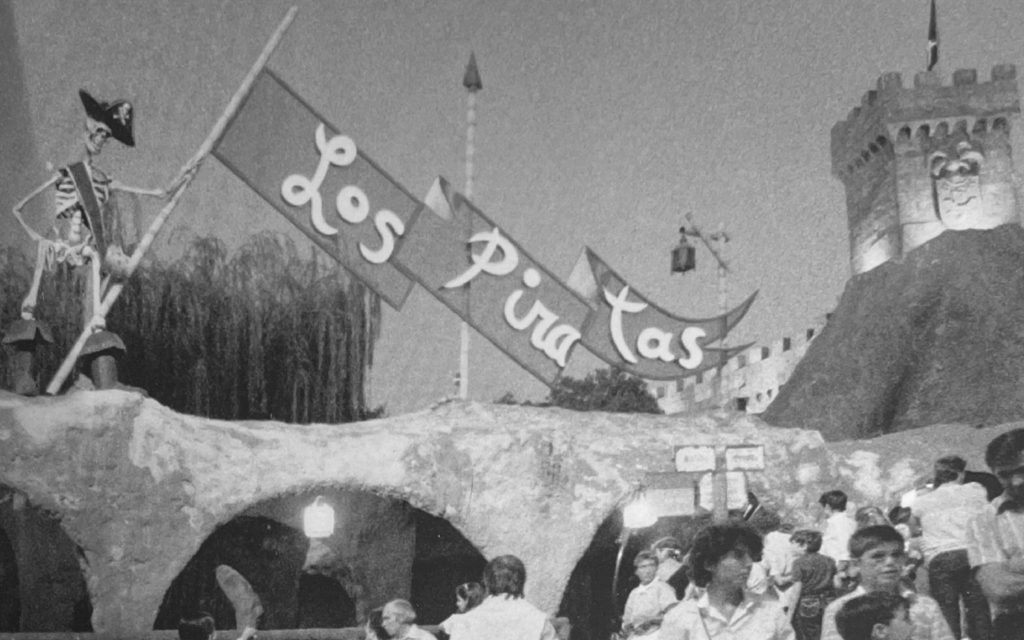
Source: Besas, M., & García, H. (2016). Parque de Atracciones de Madrid: Un viaje desde sus orígenes hasta el presente. Ediciones La Librería.
Despite the new attractions, by the end of the 1980s, Parque de Atracciones de Madrid was quite deteriorated and had lost several annual visitors. In 1989 the park’s ownership changed and the new owners decided to take action on the matter and an interesting (and perhaps too ambitious) renovation proposal was raised. An approach to the Walt Disney World EPCOT model was proposed, with the creation of the “Bosque Ecológico”/“Ecological Forest”, an area that integrating nature, the creation of a cultural and scientific area with different pavilions, the renovation of existing attractions, and the construction of new ones. The plan was not approved by the Madrid City Council, since, among other things, it involved the expansion of the amusement park grounds.
Although the first proposed plan by the new owners was not approved, they did other significant investments to improve the existing attractions and facilities. In 1989 “Cóndor”, nowadays known as “Rotor” (1989-Present) was inaugurated. Condor is a ride from the manufacturer Huss Rides. Another attraction that was built in this period was “Flume Ride”, currently known as “Aserradero” (1990-present), a flume ride themed to a sawmill.
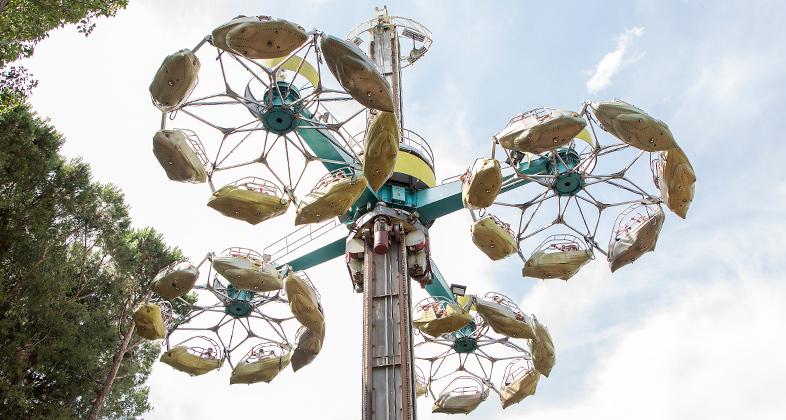
Source: https://www.parquedeatracciones.es/atracciones/rotor
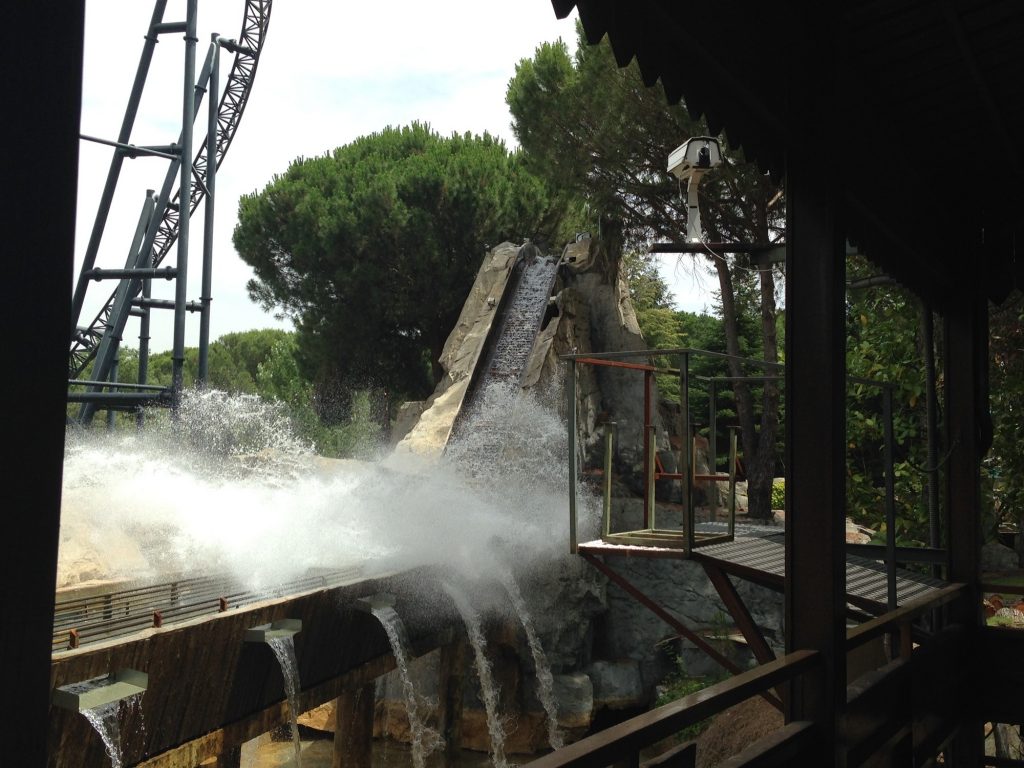
Source: https://www.pa-community.com/parques/parque-atracciones-madrid/atracciones/aserradero/fotos
In 1989, following the horror mazes trend that originated in Argentina, “Pasaje del Terror” was inaugurated. Later on it was renamed “Viejo Caserón” (1989-2014). For the construction of this attraction, the building of “Caserío Vasco” (1969-1988) was used. The building’s façade was re-themed to give it the appearance of an old haunted house. In “Pasaje del Terror” guests could personally visit and experience several scenes from the most famous horror movies of the time. “Pasaje del Terror”, and later “Viejo Caserón”, was a very new experience for the Spanish public and immediately became one of the star attractions of Parque de Atracciones de Madrid. Over the course of several years, it was expanded and the scenes were updated. Nowadays, a similar horror maze from the same creators can be found in Blackpool Pleasure Beach with the same name: “Pasaje del Terror”.
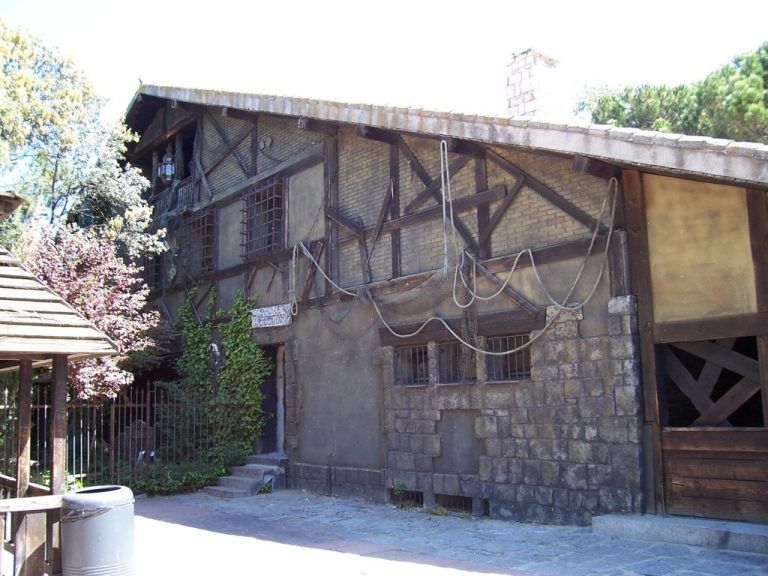
Source: https://ocioterror.es/pasaje-del-terror-viejo-caseron-1989-2014/
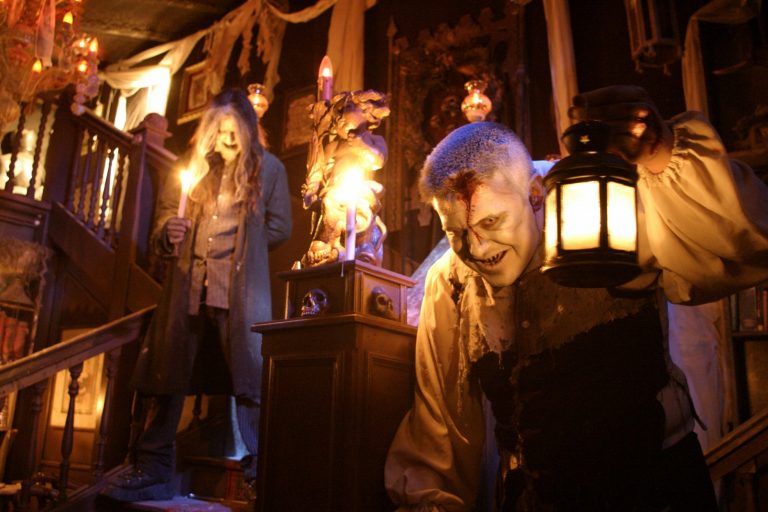
Source: https://ocioterror.es/pasaje-del-terror-viejo-caseron-1989-2014/
One year later “Katapult” (1990-1993) opened, making it the park’s fourth roller coaster after “7 Picos” (1969-2005), “Jet Star” (1970-1998), and “Mini 7 Picos” (1976-1998). “Katapult” was one of the first roller coasters in Spain with a loop in its layout, although in this case, “Katapult” was, in fact, just only a 14 meters-high vertical loop and a curved station. “Katapult” sparked some debate about whether a ride of these characteristics can be considered a roller coaster or not. Due to its recurring failures and expensive repairs, it was not suitable for the park to keep operating the attraction, so it was retired only three years after its inauguration.
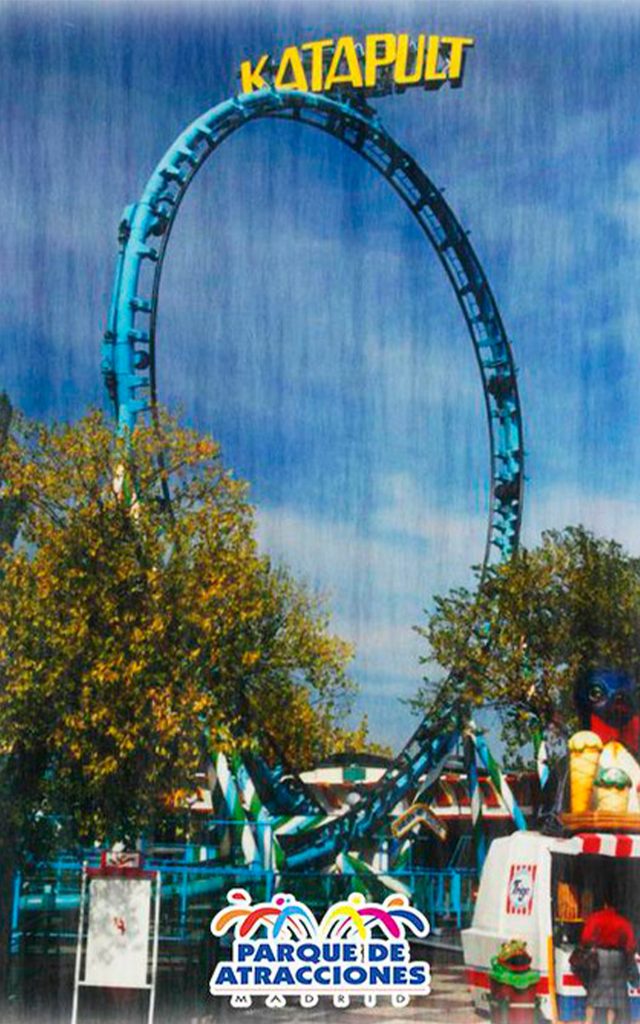
Source: https://spaincoaster.com/katapult-parque-atracciones-madrid/
In order to replace “Katapult” (1990-1993), in 1992 a new much more complete roller coaster called “Looping Star” (1992-1998) was built. The layout of the new roller coaster was 592 meters long, reached a maximum height of 25 meters, and speeds up to 77 km/h. “Looping Star” had a vertical loop too. The problem with this roller coaster, and the main cause of its short operation period, was the noise made by the trains, which annoyed the neighbors who lived near Parque de Atracciones.
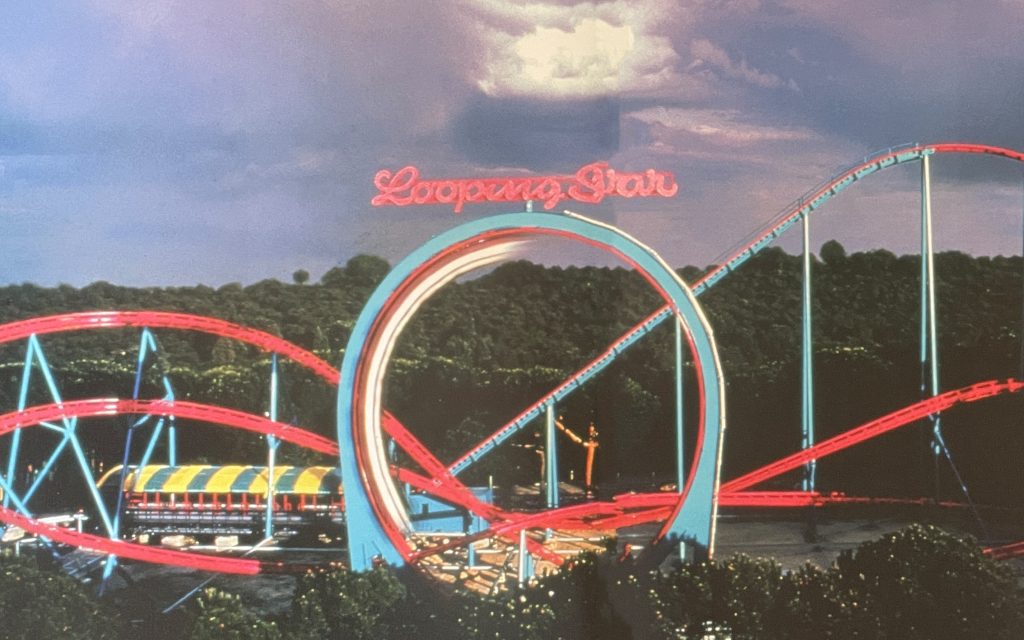
Source: Besas, M., & García, H. (2016). Parque de Atracciones de Madrid: Un viaje desde sus orígenes hasta el presente. Ediciones La Librería
In 1995 it was decided to change the park’s icon. In 1978 the bar and the viewpoint of “Platillo Volante” had to be closed because the giant structure did not have an evacuation system that properly complied with valid regulations. It’s for this reason that, in 1978, “Platillo Volante” became only a decorative structure. In 1995 it was completely rethemed into a giant African tree. Parque de Atracciones de Madrid’s logo was also modified which, from 1995, has included the silhouette of a large tree.
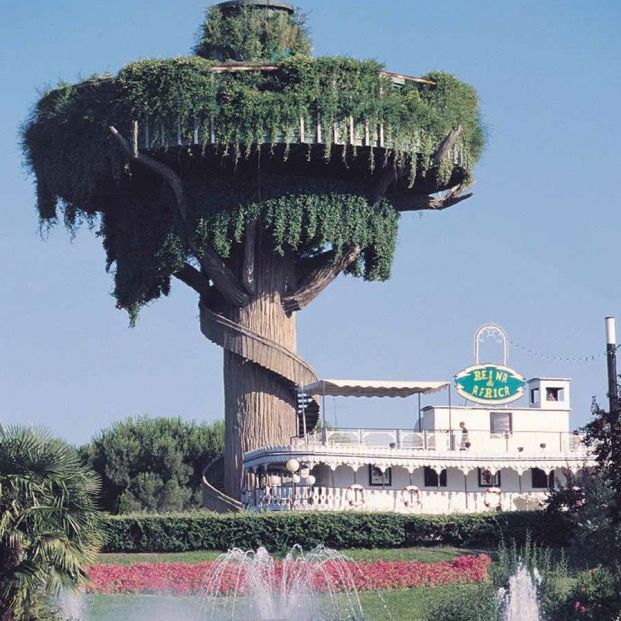
Source: http://www.agenteprovocador.es/publicaciones/cenar-en-un-platillo-volante-o-cuando-madrid-tuvo-un-ovni
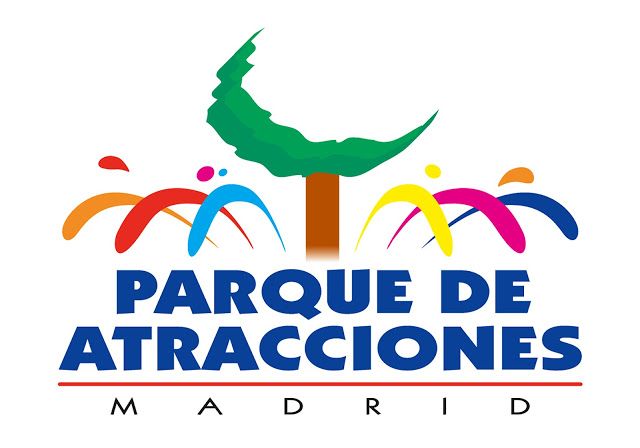
Source: https://www.pinterest.es/pin/552816922989537072/
Due to the improvements carried out during the 90s by the park’s new owners, the Parque de Atracciones de Madrid was refloated and made profitable. In 1995 the first theme parks began to open in Spain. I was decided to transform Parque de Atracciones into a pseudo-theme park, creating 5 different areas grouping attractions with coherent themes: “Zona del Maquinismo”/“Machinery Zone”, “Zona de la Tranquilidad”/“Tranquility Zone”, “Zona de la Naturaleza”/“Nature Zone”, “Zona Infantil”/“Children’s Zone” and, “Gran Avenida”/“Great Avenue”.
The first area that was built in 1997 was “Zona del Maquinismo”, designed for young guests and decorated with industrial elements. This new park’s area was inaugurated with attractions such as “La Máquina”/“The Machine” (1997-Present), a Huss Rides Frisbee attraction; “Lanzadera”/“Shuttle” (1997-Present), a 63-meter-high Intamin Giant Drop Tower; and two years later a new roller coaster was inaugurated: “Tornado” (1999-Present), a 30-meter high Intamin Inverted Roller Coaster, with a 800 meters long layout and reaches speeds up to 80 km/h.
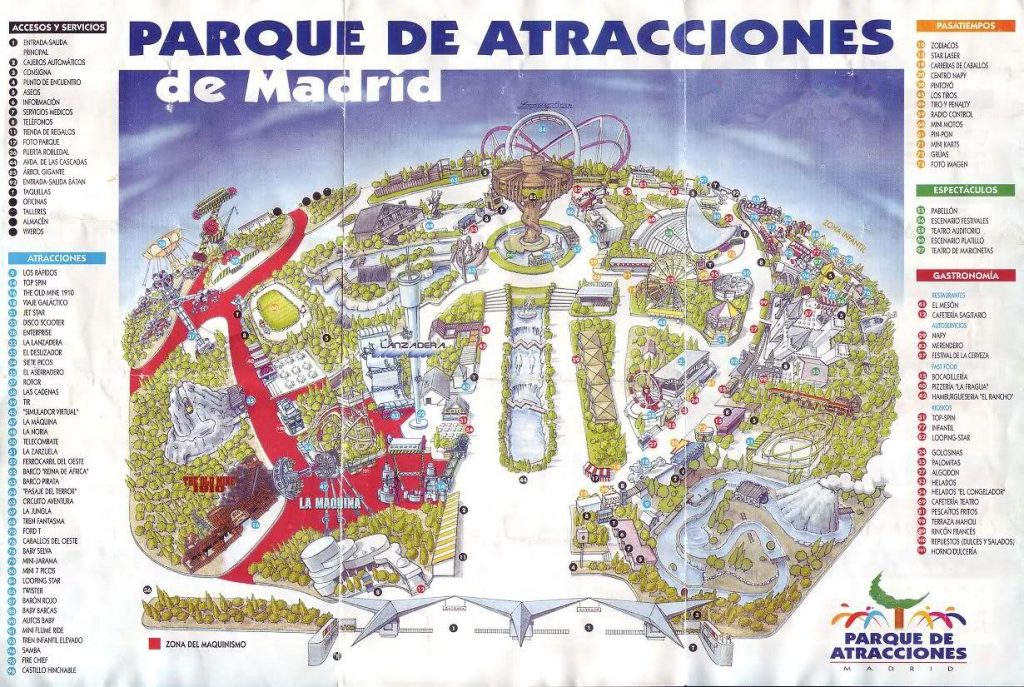
Source: https://spaincoaster.com/antiguas-montanas-rusas-parque-atracciones-madrid/

Source: https://www.pa-community.com/parques/parque-atracciones-madrid/atracciones/maquina
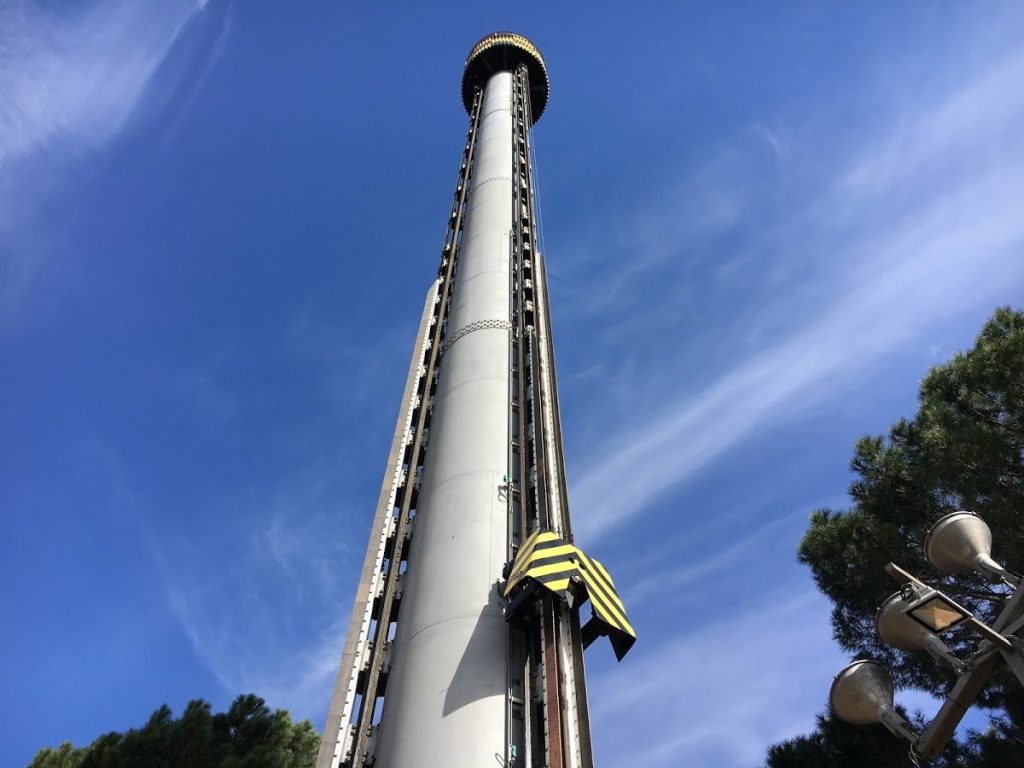
Source: https://angelresorts.es/fotos/parque-atracciones-madrid/
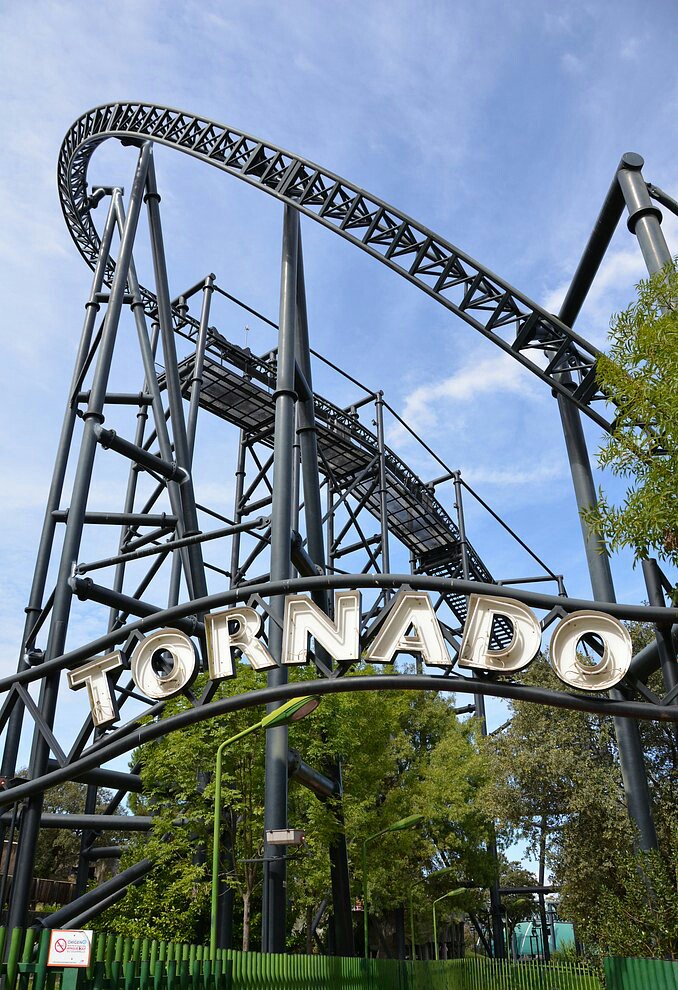
Source: http://jjparques.blogspot.com/2016/05/analisiscoasters-2.html
In addition, Parque de Atracciones de Madrid, Zoo Aquarium de Madrid, Aquopolis water park, and the Teleférico de Madrid joined forces to fund the company Parques Reunidos, which has become one of the leading global operators of regional leisure parks, currently operating more than 60 theme parks, zoos, water parks, and other types of leisure centers in various countries across Europe, North America, the Middle East, and Australia.
The second inaugurated area of the park was “Zona de la Naturaleza”, designed for a family audience. “Zona de la Naturaleza” offers to the guests a natural environment with large open spaces, using materials such as stone, wood, and different types of vegetation for the theming. The new attractions that were inaugurated with this area were “Los Rapidos”/“The Rapids” (1996-Present) a Hopkins Rides River Raft Ride with a length of 800 meters and multiple water effects, and also “Los Fiordos”/“The Fjords” (1998-Present) an Intamin Spillwater boat ride.

Source: https://www.pa-community.com/parques/parque-atracciones-madrid/atracciones/rapidos/fotos
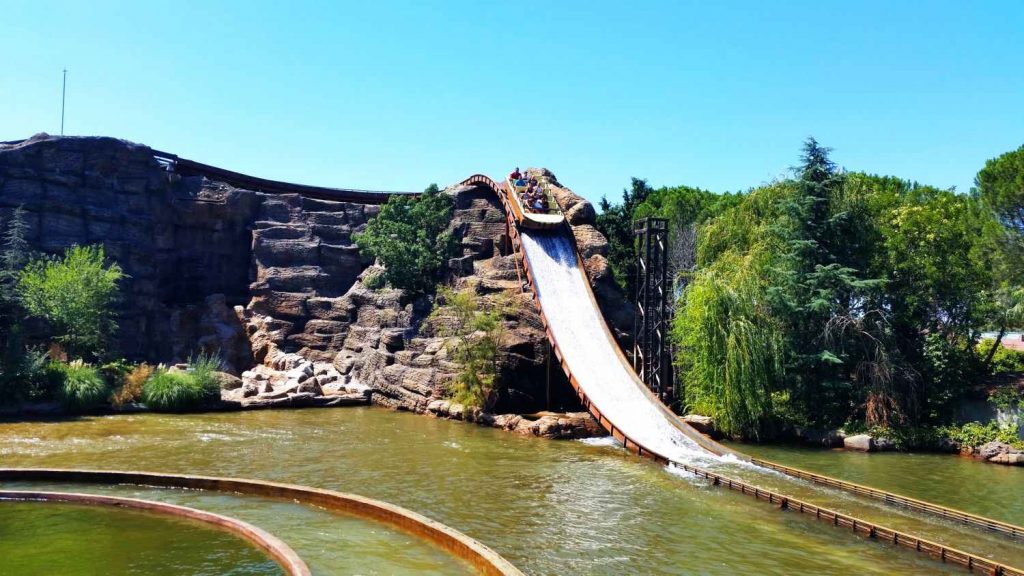
Source: https://www.demediterraning.com/es/hotel–entradas-parque-atracciones-madrid_e740893.html
In 1999 the new “Zona de la Tranquilidad” was inaugurated. It was located right behind “Árbol Gigante”, where a year before the roller coaster “Looping Star” was still located. For this reason, it was decided to build quieter attractions in this area of the park. The attractions that were inaugurated in this new area were “Fantasía”/“Fantasy” (1999-2015), a humble version of the classic Disney Park’s Small World attraction; “El Río Encantado”/“Enchanted River” (2000-2009), a tour by beautiful round boats through a canal decorated with mythological creatures, and fantastical elements; and “Zeppelín” (2000-present), an elevated monorail shaped like a zeppelin that tours the park. “Zona Infantil” was also inaugurated, with several attractions for children and a family atmosphere. Finally, the old “Avenida de las Cascadas” was re-themed and became the “Gran Avenida” decorated like Madrid from the 1920s. The remodeling of the park was a great success and led to a significant increase in the influx of visitors.

Source: https://www.youtube.com/watch?v=fyRAeARKrYs&ab_channel=Marada78

Source: https://www.screammachine.net/rideinfo.php?ridecode=1804
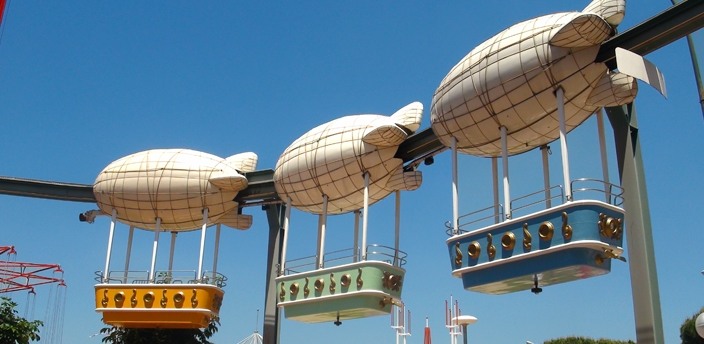
Source: https://www.pa-community.com/parques/parque-atracciones-madrid/atracciones/zeppelin
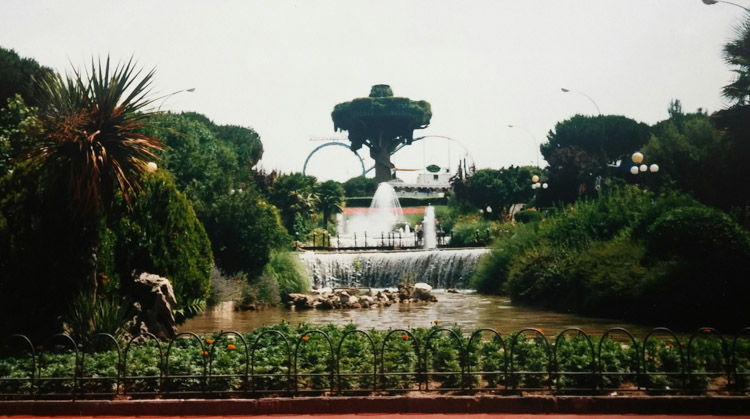
Source: https://www.madridsensations.com/es/el-parque-de-atracciones-cuando-eramos-pequenos/
In 1999 the new “Gran Teatro Auditorio” (1999-Present) opened its doors to the public, with improved facilities compared to its predecessor “Teatro Auditórium”. “Gran Teatro Auditorio” is a large indoor theater, designed to host large theatrical productions. Being an indoor theatre allows shows to perform during all months of the year regardless of the weather (in Madrid winters are quite cold and summers are very hot).
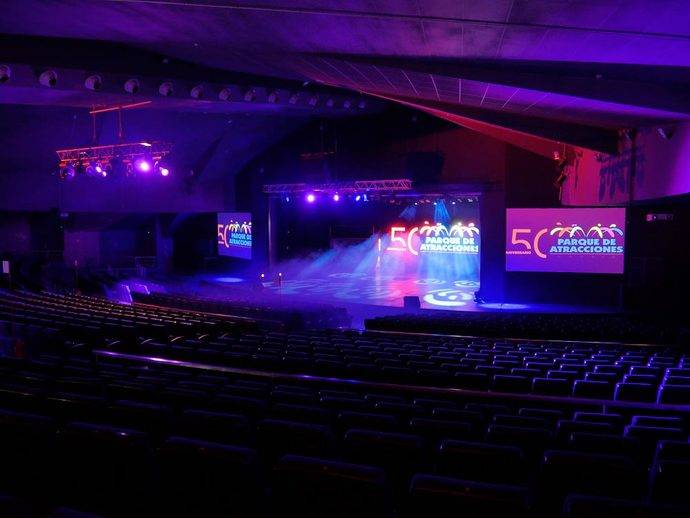
Source: https://www.nexotur.com/noticia/106504/conexo/el-parque-de-atracciones-de-madrid-apuesta-por-el-turismo-mice-en-2020.html
At the end of spring 2005, a new roller coaster was inaugurated in the area “Zona del Maquinismo”: “Tarántula” (2005-Present). “Tarántula” is a 25-meters-high and 700-meters-long Maurer Rides spinning coaster that can reach speeds up to 75 km/h. Its layout includes two Immelmann and a small tunnel. According to the sources consulted, “Tarántula” was the longest spinning coaster in the world at its inauguration (2016), surpassed later on by “Time Traveler” located in the Silver Dollar City theme park in 2018.
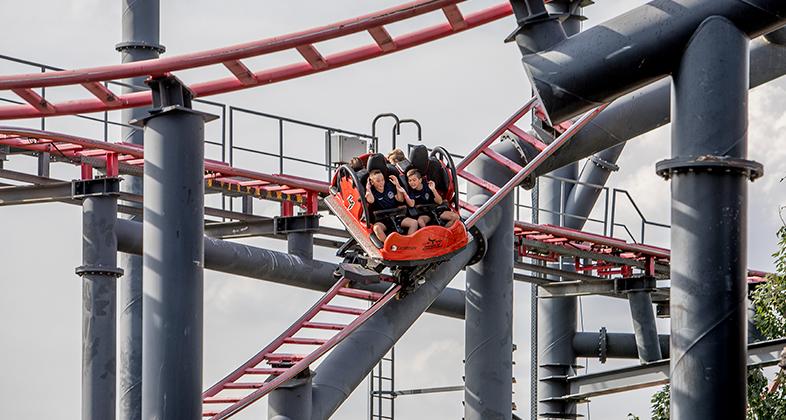
Source: https://www.parquedeatracciones.es/atracciones/tarantula
Just one year after the inauguration of “Tarántula”, Parque de Atracciones de Madrid inaugurated another interesting Maurer Rides roller coaster, in the same area of the park: “Abismo”/“Abyss” (2006-Present). “Abismo” is an extension of the “Skyloop” roller coaster model. The coaster has a length of 410 meters, a height of 46 meters, and 2 inversions. It can reach speeds up to 105 km/h. For the construction of “Abismo”, the roller coaster “7 Picos” (1969-2005) had to be dismantled.
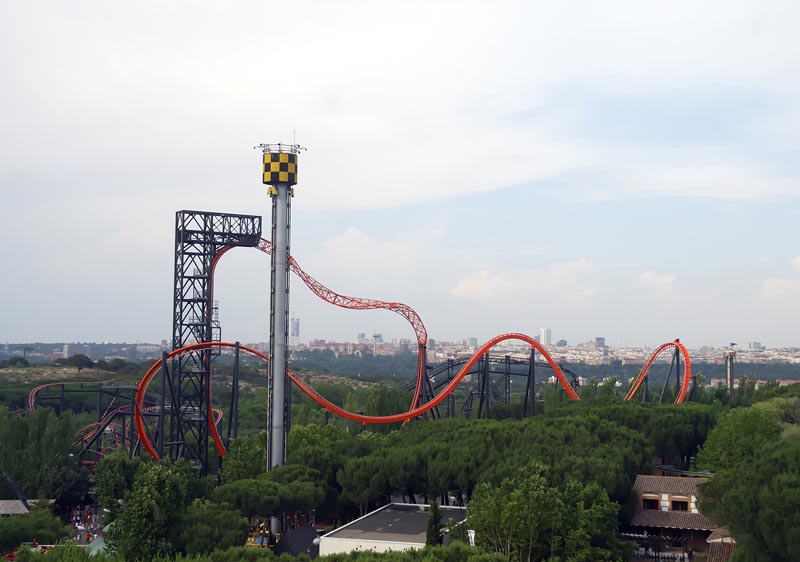
Source: https://alina73.wordpress.com/2008/02/24/parque-de-atracciones-de-madrid/
In 2007, a new children’s roller coaster was inaugurated: “Turbulencia”/“Turbulence”, today known as “Padrinos Voladores”/“Flying OddParents” (2007-Present). It is an expansion of Zamperla’s “Flying Tigers” model, converted into a suspended children’s roller coaster. A month later, another children’s roller coaster was inaugurated: “Vagones Locos”/“Crazy Wagons”, today known as “Patrulla Canina”/“Paw Patrol” (2007-Present). Originally its train was shaped like a dog, with its head and front legs in the first car, while its tail and hind legs were in the last car. Currently, although its theme has changed to the Paw Patrol, its train has no longer the shape of a dog. This roller coaster is also from Zamperla.
In 2008, a new attraction was added in “Zona del Maquinismo”: “Tifón”/“Typhoon” (2008-present), a Zamperla Mega disk’O flat ride. Although it is quite similar to “La Maquina” (1997-Present), it offers softer sensations.
A new roller coaster was inaugurated in 2009: “Vértigo”/“Dizziness” (2009-Present). “Vértigo” is a wild-mouse roller coaster with a length of 370 meters and a height of 14 meters. Before being installed in Parque de Atracciones de Madrid, this roller coaster was in the Belgian park Bobbejaanland, which had two very similar roller coasters, placed symmetrically. The manufacturer of this roller coaster is Mack Rides.
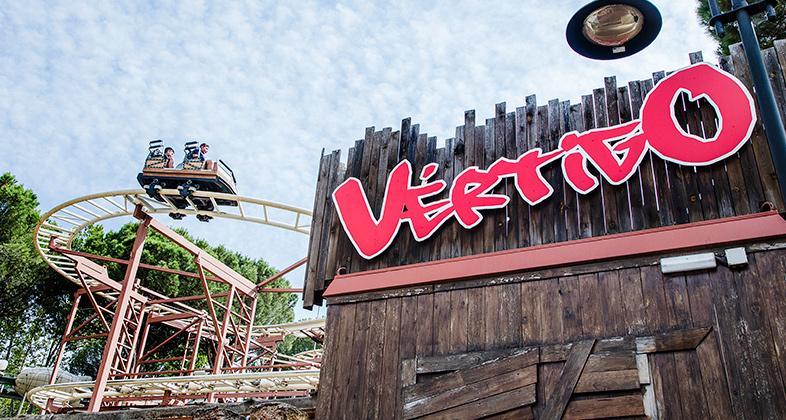
Source: https://www.parquedeatracciones.es/atracciones/vertigo
In 2010 the icon of the park, the “Árbol Gigante” (1995-2010), was demolished. “Star Flyer” (2010-Present) was built in its place. “Star Flyer” is 80 meters high, which makes it the highest attraction in the park. Due to the demolition of the “Árbol Gigante” in 2010, the park’s logo was modified again, removing the silhouette of the tree.

Source: https://www.youtube.com/watch?v=mQdjw9X2GHo&ab_channel=GrupoParquesReunidos
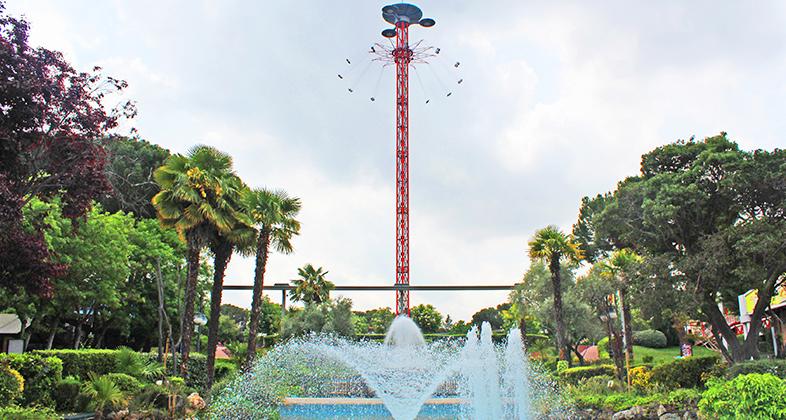
Source: https://www.parquedeatracciones.es/atracciones/star-flyer
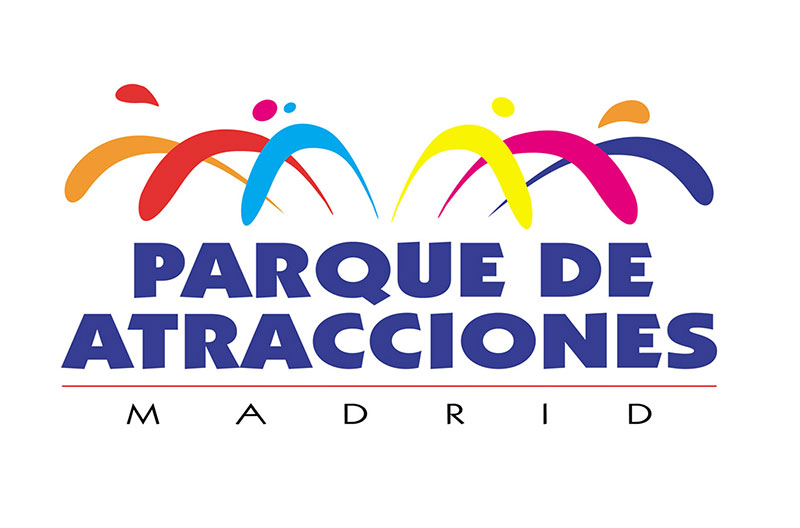
Source: https://www.publiparques.com/2019/01/descuentos-y-ofertas-para-parque-de.html
The first Halloween season at Parque de Atracciones de Madrid was held in 2011. Before the year 2000 Halloween was not celebrated in theme and amusement parks in Spaing. PortAventura was the first Spanish park to celebrate this festivity in 2000, when Universal was the owner of the park. From that moment, more Spanish parks have progressively held Halloween events. Nowadays, it would be hard to imagine a Spanish theme park without a Halloween season.
In 2012 the last roller coaster in the park to date was inaugurated: “TNT Tren de la Mina”/“TNT Mine Train” (2012-Present). “TNT Tren de la Mina” is a Gerstlauer custom mine train family roller coaster. It is 18 meters high and 450 meters long, reaching speeds up to 55 km/h. In 2017, virtual reality headsets were incorporated into the ride.
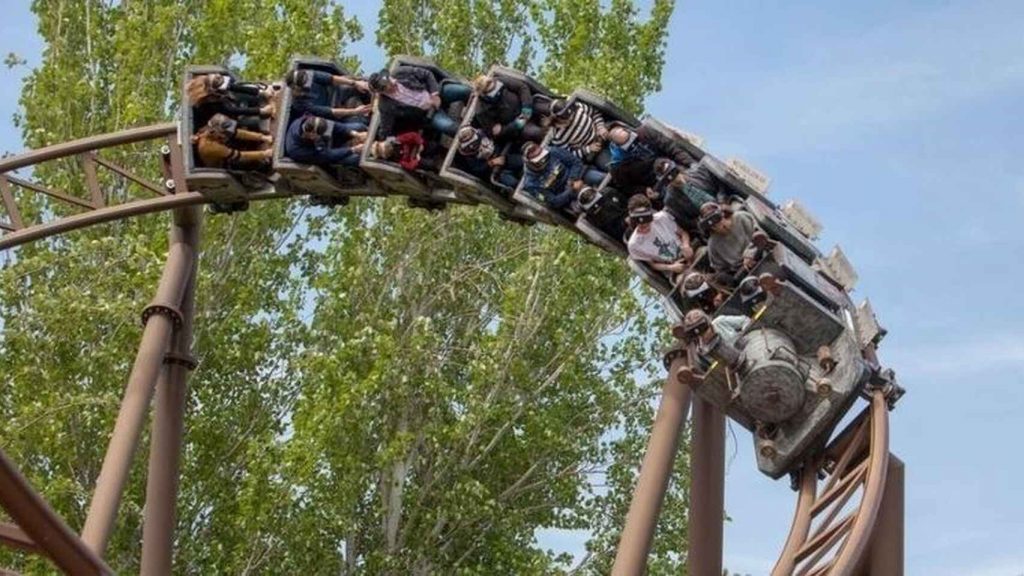
https://www.elespanol.com/sociedad/sucesos/20170716/231727093_0.html
The last two relevant events of Parque de Atracciones de Madrid were in 2014, when “Zona Infantil” (1999-2014) and its attractions were rethemed to Nickelodeon and its characters, becoming “Nickelodeon Land” (2014-Present). The park incorporated new characters such as Dora the Explorer, SpongeBob, and Teenage Mutant Ninja Turtles, among others. Finally, the same year, a new horror maze was inaugurated: “The Walking Dead Experience” (2014-Present), in the same location where “Pasaje del Terror” and “Viejo Caserón” were previously located.
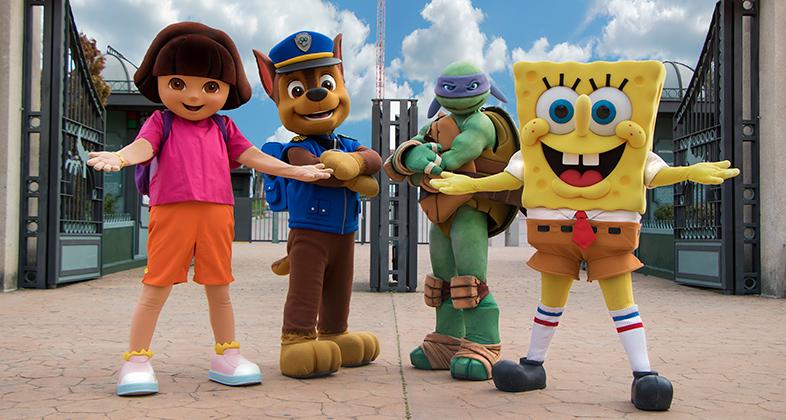
Source: https://www.parquedeatracciones.es/espectaculos/meet-greet-nickelodeon-principal
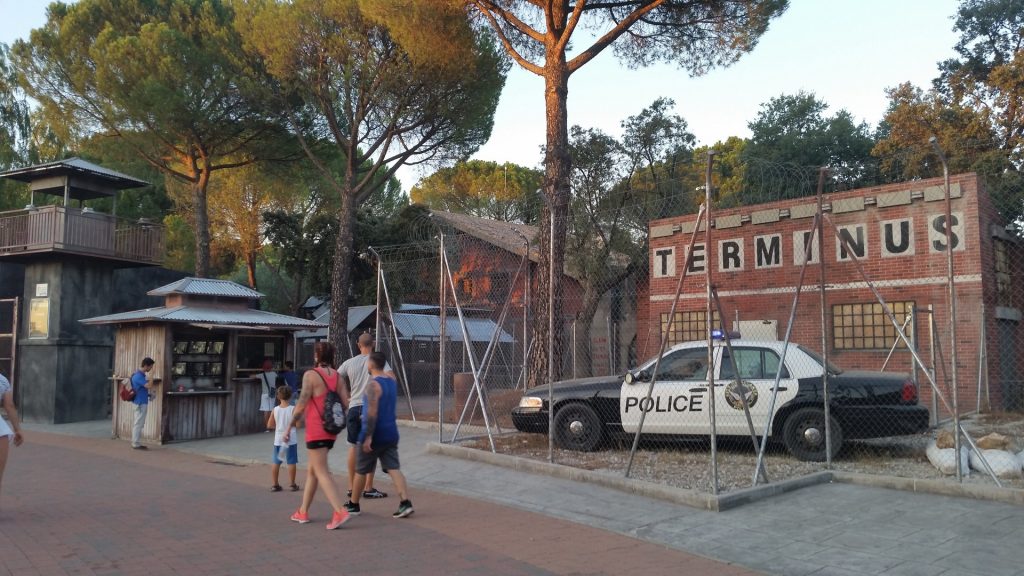
Source: https://erasmusu.com/es/erasmus-madrid/blog-erasmus/el-parque-de-atracciones-de-madrid-535995
In 2019 Parque de Atracciones de Madrid celebrated its 50th anniversary. In the upcoming years, following its trajectory, the park will surely continue to surprise its visitors with new and great experiences for all ages. It is highly recommended to visit the park if you travel to Madrid, it can be perfectly visited in just one day.
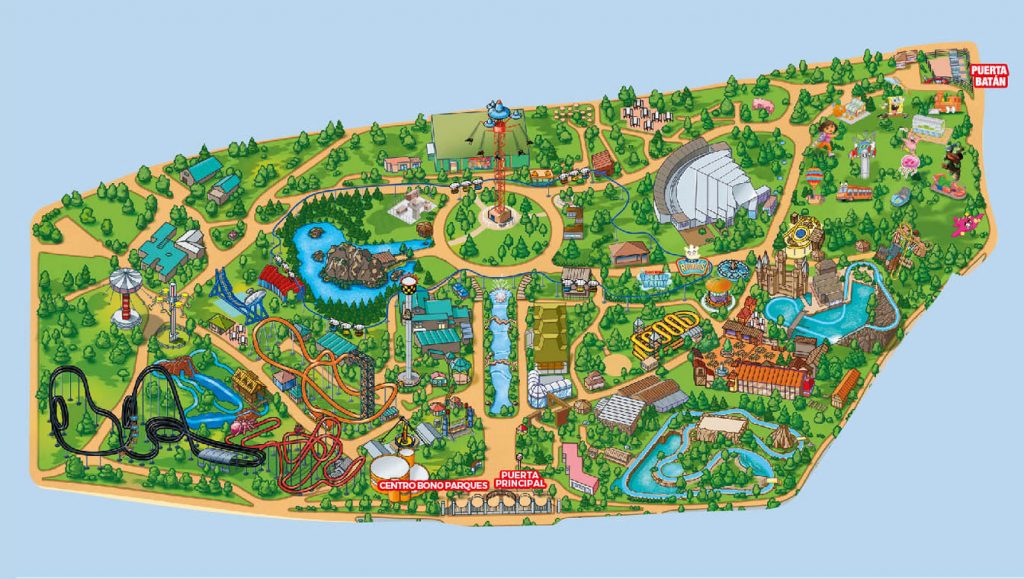
Source: https://www.parquedeatracciones.es/con-nuestras-rutas
Sources used for this article:
Almena, E. (2015, August 23). El Parque de Atracciones en los 80. Madrid Sensations Tours. https://www.madridsensations.com/es/el-parque-de-atracciones-cuando-eramos-pequenos/
Ayuntamiento de Madrid. (n.d.). Casa de Campo. Esmadrid. https://www.esmadrid.com/informacion-turistica/casa-de-campo
Besas, M., & García, H. (2016). Parque de Atracciones de Madrid: Un viaje desde sus orígenes hasta el presente. Ediciones La Librería.
Blackpool Pleasure Beach. (n.d.). Pasaje del Terror. https://www.blackpoolpleasurebeach.com/pasaje-del-terror/
Brotons, R. (2011). Parcs d’Atraccions de Barcelona (2nd ed.). Albertí.
Bside, F. (2017, September 23). La terrorífica evolución del Halloween de PortAventura. En la Disneylandia del Amor. https://elcieloesrosaenladisneylandiadelamor.blogspot.com/2017/09/la-terrorifica-evolucion-del-halloween.html
Cenar en un platillo volante o cuando Madrid tuvo un OVNI. (n.d.). Agente Provocador. http://www.agenteprovocador.es/publicaciones/cenar-en-un-platillo-volante-o-cuando-madrid-tuvo-un-ovni
Coasterpedia. (n.d.). Time Traveler. https://rollercoaster.fandom.com/wiki/Time_Traveler
Conexo.net. (2020, February 27). El Parque de Atracciones de Madrid apuesta por el Turismo MICE en 2020. https://www.nexotur.com/noticia/106504/conexo/el-parque-de-atracciones-de-madrid-apuesta-por-el-turismo-mice-en-2020.html
de Córdoba, F. (2012, July 17). Parque de Atracciones: el logo que cambió al demoler una cafetería abandonada. Marca Por Hombro. https://marcaporhombro.com/parque-de-atracciones/
de Pablos, A. (2020, November 27). Parque de Atracciones de Madrid. Madrid Proyecta. https://www.madridproyecta.es/parque-de-atracciones/
El Observatorio de Madrid. (2016, February 11). Visita al Parque de Atracciones: lo que tus hijos no verán. https://elobservatoriodemadrid.wordpress.com/2016/02/11/visita-al-parque-de-atracciones-lo-que-tus-hijos-no-veran/
Fiter, M. (2019, May 14). Diversión, leyendas y tragedias: 50 años del Parque de Atracciones. El Independiente. https://www.elindependiente.com/tendencias/2019/05/14/diversion-leyendas-tragedias-50-anos-parque-atracciones/
H. Pérez, A. (n.d.). El Parque de Atracciones de Madrid. Madrid, la ciudad que me vio nacer. https://erasmusu.com/es/erasmus-madrid/blog-erasmus/el-parque-de-atracciones-de-madrid-535995
JJParques. (2017, June 10). ¡TNT: Tren de la Mina con Realidad Virtual! http://jjparques.blogspot.com/2017/06/tntvr.html
Ocioterror. (2017, October 8). Pasaje del Terror – Viejo Caserón Parque de Atracciones de Madrid (1989–2014). https://ocioterror.es/pasaje-del-terror-viejo-caseron-1989-2014/
PA-Community. (n.d.-a). Abismo. https://www.pa-community.com/parques/parque-atracciones-madrid/atracciones/abismo
PA-Community. (n.d.-b). La Máquina. https://www.pa-community.com/parques/parque-atracciones-madrid/atracciones/maquina
PA-Community. (n.d.-c). Lanzadera. https://www.pa-community.com/parques/parque-atracciones-madrid/atracciones/lanzadera
PA-Community. (n.d.-d). Rápidos. https://www.pa-community.com/parques/parque-atracciones-madrid/atracciones/rapidos
PA-Community. (n.d.-e). Tifón. https://www.pa-community.com/parques/parque-atracciones-madrid/atracciones/tifon
PA-Community. (n.d.-f). TNT Tren de la Mina. https://www.pa-community.com/parques/parque-atracciones-madrid/atracciones/tnt
Parques Reunidos Servicios Centrales, S.A. (n.d.). About Us. Grupo Parques Reunidos. https://www.parquesreunidos.com/en/the-group/about-us/
Reina, C. (2019, May 15). Los 50 años de historia del emblemático Parque de Atracciones de Madrid. El Economista. https://www.eleconomista.es/status/noticias/9877675/05/19/El-emblematico-Parque-de-Atracciones-de-Madrid-cumple-50-anos-por-todo-lo-alto.html
Se va el Platillo Volante del Parque de Atracciones de Madrid. (2010, April 6). Historias Matritenses. http://historias-matritenses.blogspot.com/2010/04/se-va-el-platillo-volante-del-parque-de.html
Spain Coaster. (2018a, October 3). 7 Picos (Parque de Atracciones de Madrid). https://spaincoaster.com/7-picos-parque-atracciones-madrid/
Spain Coaster. (2018b, October 3). Looping Star (Parque de Atracciones de Madrid). https://spaincoaster.com/looping-star-parque-atracciones-madrid/
Spain Coaster. (2018c, October 4). Katapult (Parque de Atracciones de Madrid). https://spaincoaster.com/katapult-parque-atracciones-madrid/
Spain Coaster. (2018d, October 5). Jet Star (Parque de Atracciones de Madrid). https://spaincoaster.com/jet-star-parque-atracciones-madrid/
Spain Coaster. (2018e, October 9). Antiguas montañas rusas del Parque de Atracciones de Madrid. https://spaincoaster.com/antiguas-montanas-rusas-parque-atracciones-madrid/
Spain Coaster. (2018f, October 9). Mapa antiguo Parque Atracciones Madrid. https://spaincoaster.com/antiguas-montanas-rusas-parque-atracciones-madrid/mapa-antiguo-parque-atracciones-madrid/


